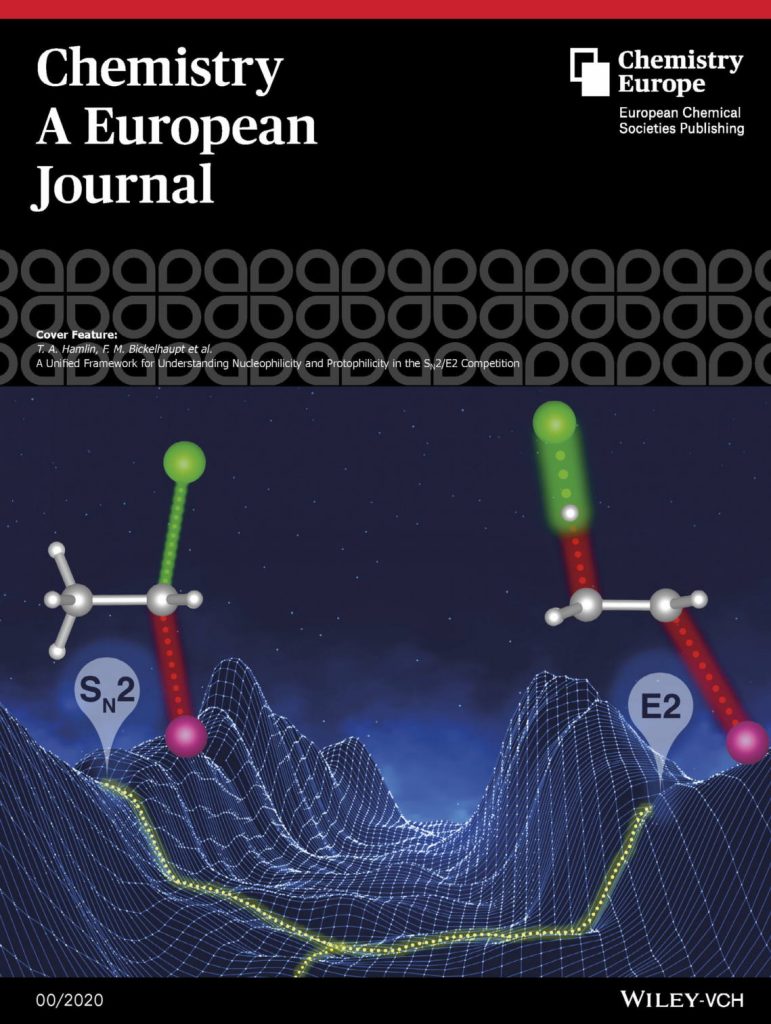Recently, in collaboration with Matthias Bickelhaupt and co-workers from the VU University Amsterdam, a new paper was published by Marcel Swart on the competition between bimolecular substitution vs. elimination pathways. Model systems of X(-) and C2H5Y (X,Y = F, Cl, Br, I, At) were used to explore the nucleophilicity and protophilicity, at the ZORA-OLYP/TZ2P level of theory. These explorations have yielded a consistent overview of reactivity trends over a wide range in reactivity and pathways. Activation strain analyses of these reactions reveal the factors that determine the shape of the potential energy surfaces and hence govern the propensity of the Lewis base to act as a nucleophile or protophile. The concepts of “characteristic distortivity” and “transition state acidity” of a reaction are introduced, which have the potential to enable chemists to better understand and design reactions for synthesis.
The paper was recently published online in Chemistry–A European Journal:
P. Vermeeren, T. Hansen, P. Jansen, M. Swart, T.A. Hamlin, and F.M. Bickelhaupt
“A Unified Framework for Understanding Nucleophilicity and Protophilicity in the SN 2/E2 Competition”
Chem. Eur. J. 2020, [], ASAP-
DOI: 10.1002/chem.202003831
The paper was selected for the cover of the issue.

Girona, November 14, 2020
For more information: gestor.iqcc@gmail.com

